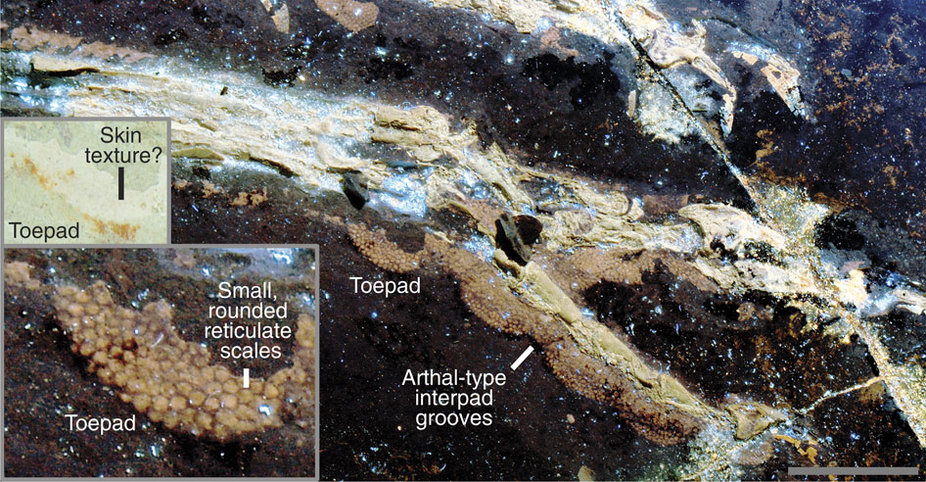 Some people speculate that most dinosaurs had feathers, while others still believe it’s up for debate. We may not end the discussion anytime soon, but a new study has revealed additional details to help us draw more accurate conclusions.
Some people speculate that most dinosaurs had feathers, while others still believe it’s up for debate. We may not end the discussion anytime soon, but a new study has revealed additional details to help us draw more accurate conclusions.
In a report published in Nature Communications, researchers shared what they found when they used high-powered lasers to look at the invisible details of dinosaurs. Specifically, they wanted to closely examine previously unseen soft tissue on the bones of a presumably feathered dinosaur, Anchiornis. The scientists used laser-stimulated fluorescence (LSF) to conduct their research (Wang et al., 2017).
“In this study, LSF imaging is performed on the four-winged dinosaur Anchiornis, one of a few key basal paravian theropods—including Microraptor and Archaeopteryx—whose osteology, feathering and aerodynamics have made profound contributions to the understanding of avian origins and early flight evolution,” they explained in the report.
They added that the Anchiornis was especially useful in their particular study, as it had not been heavily explored as a link back to avian origins. After analyzing the creature’s fossil, they discovered that feathering may have been a “significant factor” in how basal paravians, in particular, achieved flight.
The laser imaging was also able to reveal that the dinosaur still had some scales, specifically on its footpads. It also had “drumstick-shaped legs” and relatively slender feet.
“The well-preserved propatagial surface of Anchiornis shows the earliest known details of paravian covert feather attachment and arrangement,” the researchers concluded.
The study also went as far as to state that there were likely “regularly spaced spots” on the exterior of the dinosaur. This would mean that it not only had feathers, but an evolved coat with a hint of camouflage.
The Anchiornis lived nearly 150 million years ago, but as the recent data proves, there is still more we can learn through the use of today’s technology. Dr. Stephen Brusatte of the University of Edinburgh, who was not involved in the research, called the study’s evidence “striking.”
“This study uses high-powered lasers to generate the single best look at the wings and body outline of a dinosaur ever,” he told BBC News (“‘Best ever’ view of what a dinosaur really looked like – BBC News,” n.d.). “The laser images show that this non-bird dinosaur had wings that were remarkably similar to those of living birds, down to the soft tissues.”
The researchers note that future studies will likely benefit from their new data, and from their latest report, it’s hard to argue with their prediction.
